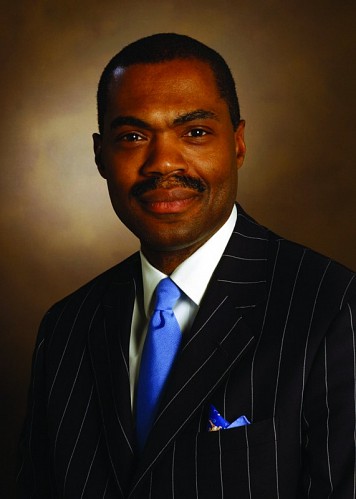To say Nemours/Alfred I. duPont Hospital for Children in Wilmington, Del., is a progressive healthcare facility may not go far enough.
The 75-year-old hospital has kicked off a $260 million expansion, which will feature single-patient rooms, eliminated fried foods from its cafeteria, adopted Lean business practices to its operating room and ambulatory sites, and adopted a casual Friday attire policy for employees.
All of this has taken place under the leadership of Kevin Churchwell, MD, CEO of Nemours duPont Hospital for Children. Dr. Churchwell, trained in anesthesia and pediatric critical care, joined Nemours in December 2010 from the Monroe Carell Jr. Children's Hospital, which is part of Nashville, Tenn.-based Vanderbilt University Medical Center. Dr. Churchwell says his hospital has accomplished many things during his tenure, and one particular change has stood out — how its emergency department, a Level II Trauma Center, was revamped.
Dr. Churchwell says his hospital has accomplished many things during his tenure, and one particular change has stood out — how its emergency department, a Level II Trauma Center, was revamped.
The situation
Nemours duPont Hospital for Children had set a hospital-wide goal to achieve 95 percent patient satisfaction scores in its Press Ganey metrics. The children's hospital was meeting its goals, but executives wanted to go a step further. They wanted to enhance and sustain high patient satisfaction marks in the emergency department — which for many hospitals is the face of the organization — by redesigning the patient-family experience.
However, Dr. Churchwell says it was more important to meet this goal organically instead of instituting a top-down approach.
"Rather than telling the ED staff what to do, we armed them with the tools and the training that allowed them to listen to their patients as well as pulling ideas from the second best available source — themselves," Dr. Churchwell says.
The process
Three main hospital managers spearheaded the ED patient experience project: Jane Mericle, RN, associate chief nurse executive, John Loiselle, MD, emergency department chief, and Ken Molczan, RN, ED nurse manager.
Together with customer experience strategy firm Experience Engineering, the staff formulated a path to first audit what the current ED patient experience was like. They interviewed patients, families and co-workers, and they documented their process with photographs and video.
Dr. Churchwell explains "a great thing" then happened with the project — after asking for more volunteers to help, more than 100 physicians and nurses stepped up. Those staff members were placed on teams, and for the next 10 months, they worked on how to create the best ED experience possible for families "at a high-anxiety time."
"The motif, or idea, we developed was simply: At Nemours, we are committed to delivering an emergency department experience that causes patients and families to feel understood, secure and confident," Ms. Mericle says.
The results
The physician and nursing teams came up with four main areas to improve ED patient satisfaction: pre-arrival, arrival, treatment and post-treatment. They investigated the rational and emotional steps that patients and families — as well as staff — experience as they move through these four areas.
For example, based on family feedback, scrubs worn in the ED will soon be color-coded. Roles such as physician, nurse, tech, liaison and other will all be clearly distinguished by scrub colors. This will allow instant identification for families to know who is entering the exam room at any given time, the teams say. The teams are also compiling a training program for the entire ED staff to ensure the consistent delivery of a distinctive encounter leaves patients and families feeling understood, secure and confident.
The program was rolled out in the latter half of 2012, and Dr. Churchwell says the new ED process flow has been trending positively. Nemours duPont Hospital for Children had recorded consistent improvement in patient satisfaction scores, wait time for physicians, informed about delays and likelihood to recommend. And he attributes the success specifically to the staff and their unique point of view that shaped the project.
"It was never a question of not having the skill sets to deal with the physical ailments of the patients. We are top-rate," Dr. Churchwell says. "It was taking the time to see [the ED] from the patient and family perspective. It was never about what we do. It was about how we did it, and now we are doing it great."
More Articles on Hospital Administration and Management:
6 CEOs Weigh in on ACOs, Employee Wellness, Payor Relationships
Working Through Healthcare Changes: Q&A With Dr. Ninfa Saunders, CEO of Central Georgia Health System
Academic Hospital Finances Today: Q&A With Tufts Medical Center CFO C. Okey Agba


